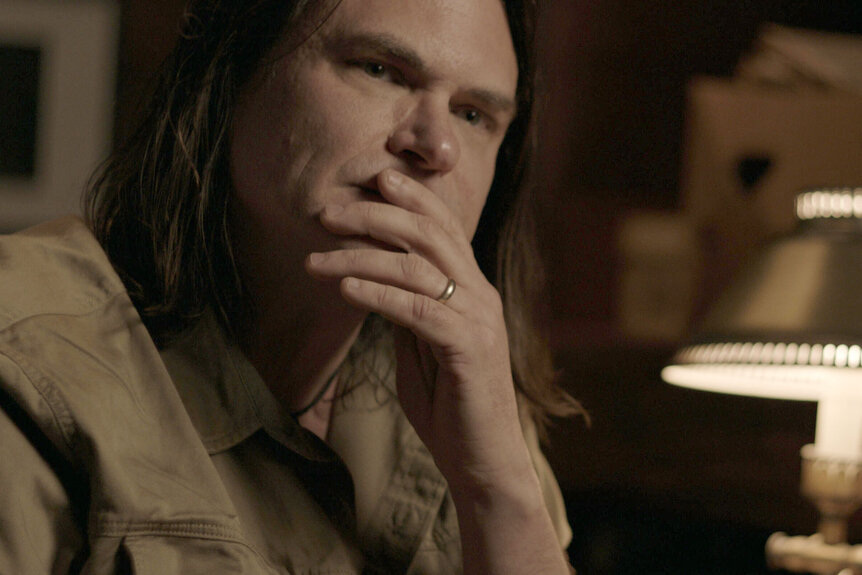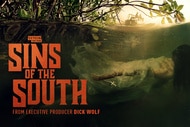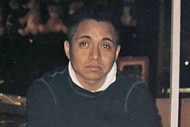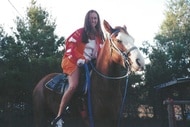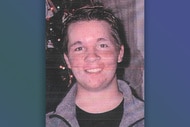Create a free profile to get unlimited access to exclusive videos, breaking news, sweepstakes, and more!
How Surviving Childhood Trauma Impacts How Journalist At Heart Of ‘Sasquatch’ Navigates Dangerous Situations
Veteran investigative journalist David Holthouse heads deep into the heart of the "Emerald Triangle" to untangle fact from legend in the story of a mysterious triple murder attributed to Bigfoot.
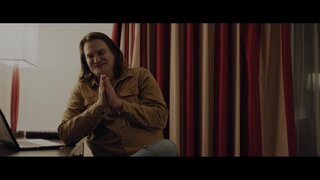
David Holthouse, a veteran journalist and producer, gets into cars alone with people who may or may not be murderers as he tries to get to the bottom of a possible triple murder in Hulu’s new docuseries “Sasquatch.” The situation is scary, but he has developed skills to keep his calm. He attributes these skills to defense mechanisms he learned as a result of childhood trauma.
The genesis of the series came in 1993, when Holthouse was visiting a pot farm in Humboldt County, California. There he overheard a terrified man explain that three men were torn limb from limb, by what he claimed was Sasquatch. Now, more than 25 years later, Holthouse is back in Northern California’s Emerald Triangle looking into whether the story was rooted in any reality, in Hulu’s new three-part docuseries produced by the Duplass Brothers, which will be available on the streaming service April 20. (Watch an exclusive clip above.)
“Sasquatch" investigates alleged sightings of the creature, but is also a deep dive into the tragic and violent history of the area’s cannabis-growing operations and its dangerous gangs. As Holthouse navigates an area known for outlaws and an exceptionally high missing persons rate, he doesn't stumble upon Bigfoot, but he discovers monsters nevertheless.
At one point during the investigation, he ventures alone to a woman’s property, far away from his vehicle or any help. Once there, she launches into a terrifying tale.
"She was telling me this story about these guys that came up from Los Angeles that they had killed on her property and telling me this story like it's a joke,” he told Oxygen.com. “[She said] they buried the guy in the woods and one of her pit bulls had gone and dug up one of the guy’s boots and it was still soaked in urine because he had pissed himself before they shot him. She’s telling me this as if it was funny.”
Holthouse says it was at that point he became unsure if he’d be leaving her property alive. While he admits to being worried, he learned to navigate such situations because of trauma experienced in childhood.
Holthouse was sexually assaulted by a family friend in 1978 when he was 7 years old and as a result had developed post-traumatic stress disorder, or PTSD. One common side effect of PTSD is dissociation.
“I remember the actual assault less than I do the dissociation,” he told Oxygen.com. “I know something terrible and terrifying is happening to my body and therefore I'm just going to leave this situation, leave it behind and dissociate, float above the room that my body’s in for a while. That’s how I survived it.”
He wrote in 2004 that he began plotting to kill his rapist but ultimately decided against it. That story, mentioned in “Sasquatch,” went viral and resulted in a 2011 "This American Life" segment. It was also adapted into a 2014 Off-Broadway show, "Stalking the Bogeyman."
Holthouse says he’s learned to harness his PTSD-induced dissociation in his work.
He says it prepared him for a lifetime of often dangerous investigative journalistic endeavors. He went undercover with neo-Nazis for a 2002 story in Denver’s Westword and then a 2006 story in the Intelligence Report. He also embedded himself with meth users for a 2003 investigative report, also in Westword.
“Dissociation can be terrifying; it can just come out of nowhere but dissociation properly focused can be a superpower,” he told Oxygen.com. “Like when you're going undercover in a neo-Nazi gang or you’re embedded with a street gang or your’e like knocking around the Emerald Triangle asking questions about an unsolved homicide 25 years ago [...] to people who may or may not have been involved in the murder themselves.”
Dissociation is typically described as a disconnection between oneself and their surroundings, memories, actions and sometimes identity. Dissociation is often the result of trauma, and is also a side effect in other disorders, including dissociative identity disorder.
“It gives you a little bit of a step back from the reality of the situation you put yourself in and take a step back from the fear and it can both simultaneously allow you to do it,” Holthouse explained, adding that not showing fear keeps him safe.
He feels that showing fear is the most dangerous thing to do in a risky situation.
“If you’re afraid, it makes it seem like you’re not supposed to be there and if you're not supposed to be there at the neo-Nazi rally or a meth head’s cabin, then they start wondering what you are doing there,” he said. “But as long as you are passing like you belong, it’s alright, so if it takes a little dissociation to get you there, that’s how I think that traumatic situation from my childhood has affected that.”
The journalist notes in the docuseries that criminals typically feel comfortable around him. He admits that due to his past, he sees the world as more nuanced. He said outlaws tend to pick up on the fact that he is not judging them or viewing them as evil or bad.
Using an analogy about ants, he explained that he’s the type of person who can dip in and out of different social groups, especially ones on the fringes of society.
“Most ants, when they try to enter another ants’ hill, are attacked because there’s an electrochemical that they give off that the other ants [don’t like] but there’s certain ants that just can go into another ant hill and navigate around there and come out alive,” he explained. “And, I feel that way with criminals for whatever reason. The signals I give off to them, they don’t exactly think that I’m one of them but I don't exactly weird them out and they really quickly accept me and allow me into their social situations and I'm a part of things pretty quickly instead of being an outsider.”
Holthouse has produced numerous true crime documentaries. He associate-produced “Active Shooter: America Under Fire” in 2017, co-produced Amazon's “Lorena” in 2019 and executive-produced Netflix's “Night Stalker: The Hunt for a Serial Killer” in 2021.
